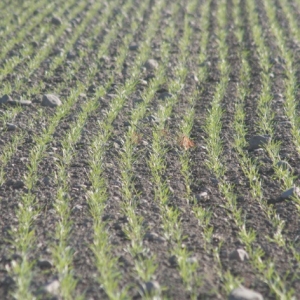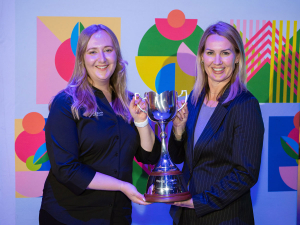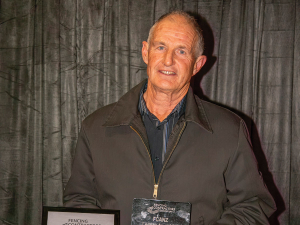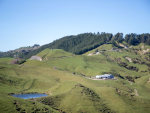It has set up a trial at Leeston which is being replicated 19,000km away in England. The UK arm of the work is being run by NIAB TAG but is using exactly the same cultivar, fungicide and nitrogen rate combinations.
The aim is to keep the crop green and photosynthesising longer so it accumulates more yield, by using later ripening cultivars, sowing earlier and using more nitrogen and fungicide.
While last year’s late harvest meant the first year’s plots weren’t sown until March 30, they’ve produced some impressive yields.
“We’re knocking on the door of 17t/ha,” commented FAR’s Nick Poole, referring to the 16.95t/ha produced by a high input plot of Conqueror.
“Okay, this is in a trial situation but we’ve got to push the boundaries with these trials to see what the potential is in a commercial situation.”
A four fungicide programme was used across all plots, but for two of the programmes new SDHI products were added. Similarly nitrogen was applied either at 140kg/ha or 240kg/ha.
Poole noted there were some marked contrasts in how the seven cultivars responded to those input levels. For example, with Conqueror, extra nitrogen was no benefit unless the SDHI fungicides were included to keep it clean. Wakanui, a more disease resistance cultivar, responded more to nitrogen than fungicides, while Claire’s output was driven by both.
Across all cultivars, there was “a significant advantage to the strob/SDHI fungicide programme once at 240kg of nitrogen,” he pointed out.
When aiming for such high yields growers may need to rethink their target numbers of ears per square metre in wheats, he added. “For a 15t/ha plus crop, 450 ears just doesn’t cut it… When we’re aiming for 15t plus, we need to review that ear number a little.”
Analysis of the components of yield in the trial – ears per square metre; grains per ear; thousand grain weight – revealed the highest yielding plot of Conqueror had 610 ears/sq m.









